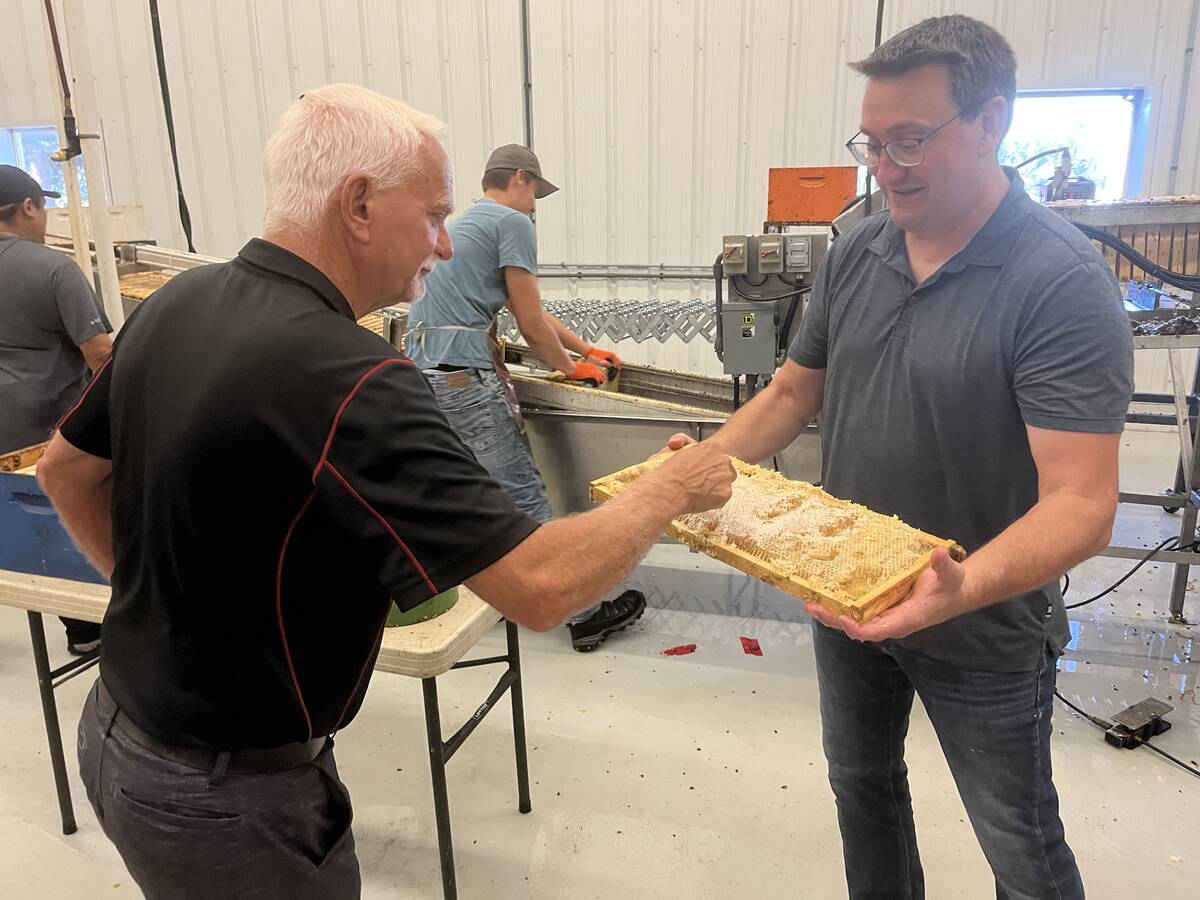Rural local governments may be ready to hear a message they loudly rejected three years ago.
Their need to merge to work in larger, more efficient groupings will be essential for rural survival, says an American banker.
Mark Drabenstott told a Saskatoon meeting organized by the city’s chamber of commerce and Saskatchewan Agrivision Corp. that farmers and rural companies and communities must put aside old rivalries.
Agrivision executive director Al Scholz said his sense was that the mood in rural Saskatchewan is changing.
Read Also

Alberta honey business ‘thrives’ despite bumpy beginnings
Thrive Honey showcases its honey production in market where Alberta produces 40 per cent of all honey produced in the country
He cited as an example the rural municipality of Craik and the village of Craik, which work out of the same building and are merging their operations to avoid duplication.
But in 2000, rural citizens denounced a report commissioned by the Saskatchewan government that suggested the province’s 1,006 urban and rural municipalities be merged into 125.
Regionalization is a concept that Drabenstott advocates as an answer to globalization pressures. It is no longer economical for farmers to grow bulk commodities and sell them on their own, he said.
His employer, the Federal Reserve Bank of Kansas City, Missouri, set up a Centre for the Study of Rural America, run by Drabenstott, to look for answers rather than react to trends.
He said there are three routes to rural survival:
Value added
Drabenstott has high hopes for crops that have been modified to produce pharmaceuticals. Health-care spending represents one-sixth of the American economy, so it is a big niche to clamber into.
Producers should work with grocers to deliver food that has a unique taste or emotion. For example, he has a British friend who frequents a fast-growing store chain that offers more than 1,500 organic foods. She is willing to pay four times the regular price for “deep-strawed” eggs that are produced by hens allowed lots of room to roam and dust to bathe in.
Successful examples of regional co-operation are branding of champagne and Roquefort cheese, which command more money than the same product produced in neighbouring areas.
But working against such ventures is the celebrated farmer culture of independence.
“I’ll grow what I want to on my land” is an attitude Drabenstott is trying to change.
“In North America we’ve stayed inside the commodity box” rather than explore new products or services.
Tourism
If there is no scenery nearby, then a region can sell its cultural experience based on unique food, ethnicity or events.
Advanced manufacturing
Drabenstott said 60 percent of the socks sold in the United States are made by mom-and-pop firms in North Carolina. He said the small companies united their efforts, funded a technology centre at a community college and learned how to stay ahead of sock makers in Mexico and Malaysia.
Governments must also adjust so their rural policy is more than just agriculture. They must create financial incentives to change behaviour and encourage regional partnerings. He also criticized farm subsidies as killers of innovation.
“If we continue to focus on a single farmer, a single community, a single country, we will fail.”
He said public policy should encourage entrepreneurship. Communities can’t recruit business winners by swiping them from other jurisdictions, but should learn to grow them, starting in school.
Family farms must climb out of the commodity box to survive, Drabenstott said. That will be accomplished through niche or value-added products or by operating in collaborative ways with others such as new generation co-ops.
“In the U.S. the average farmer is 57. That farmer is more involved with the farm bill than in how to create a new generation of farmers.”
















